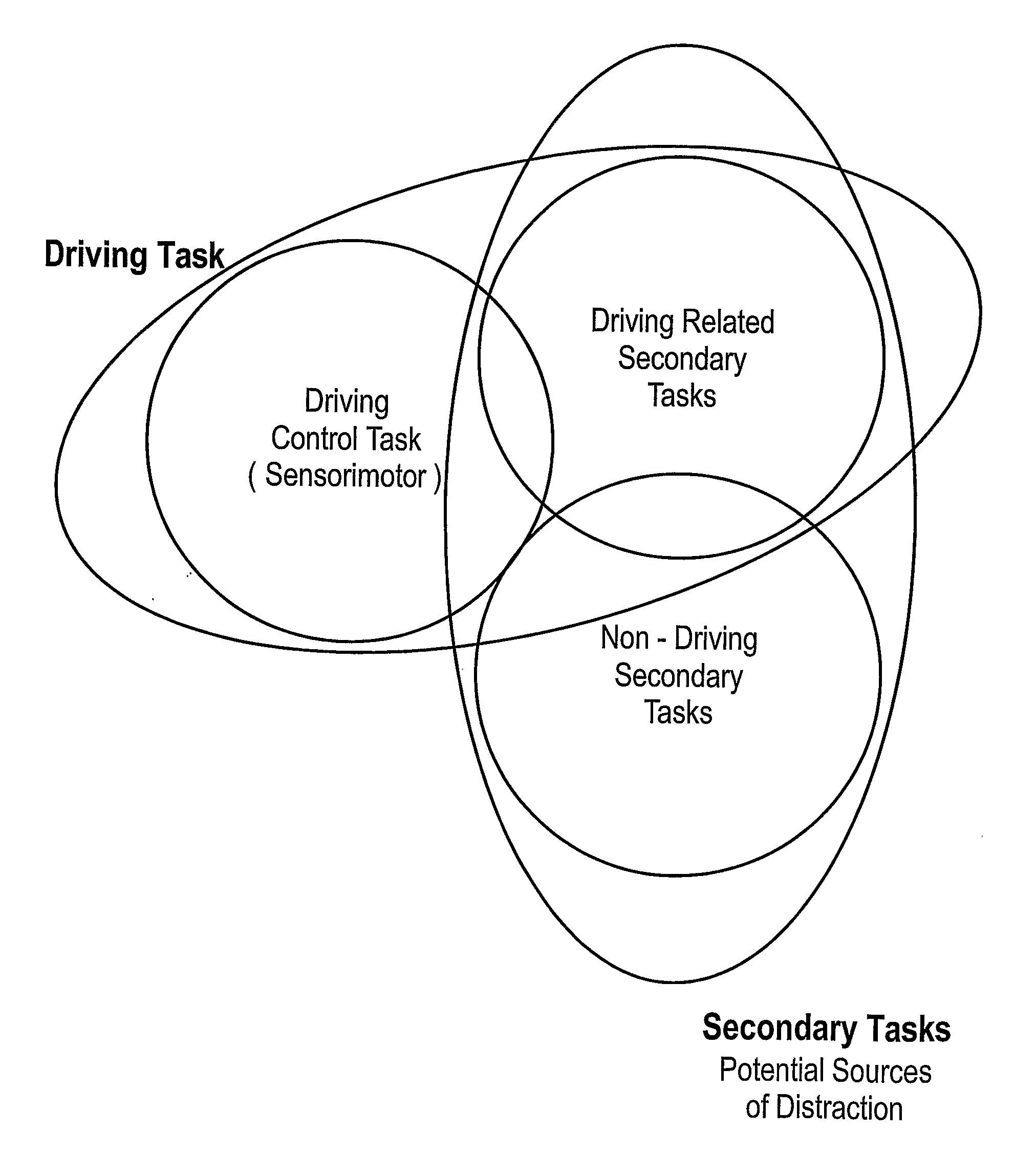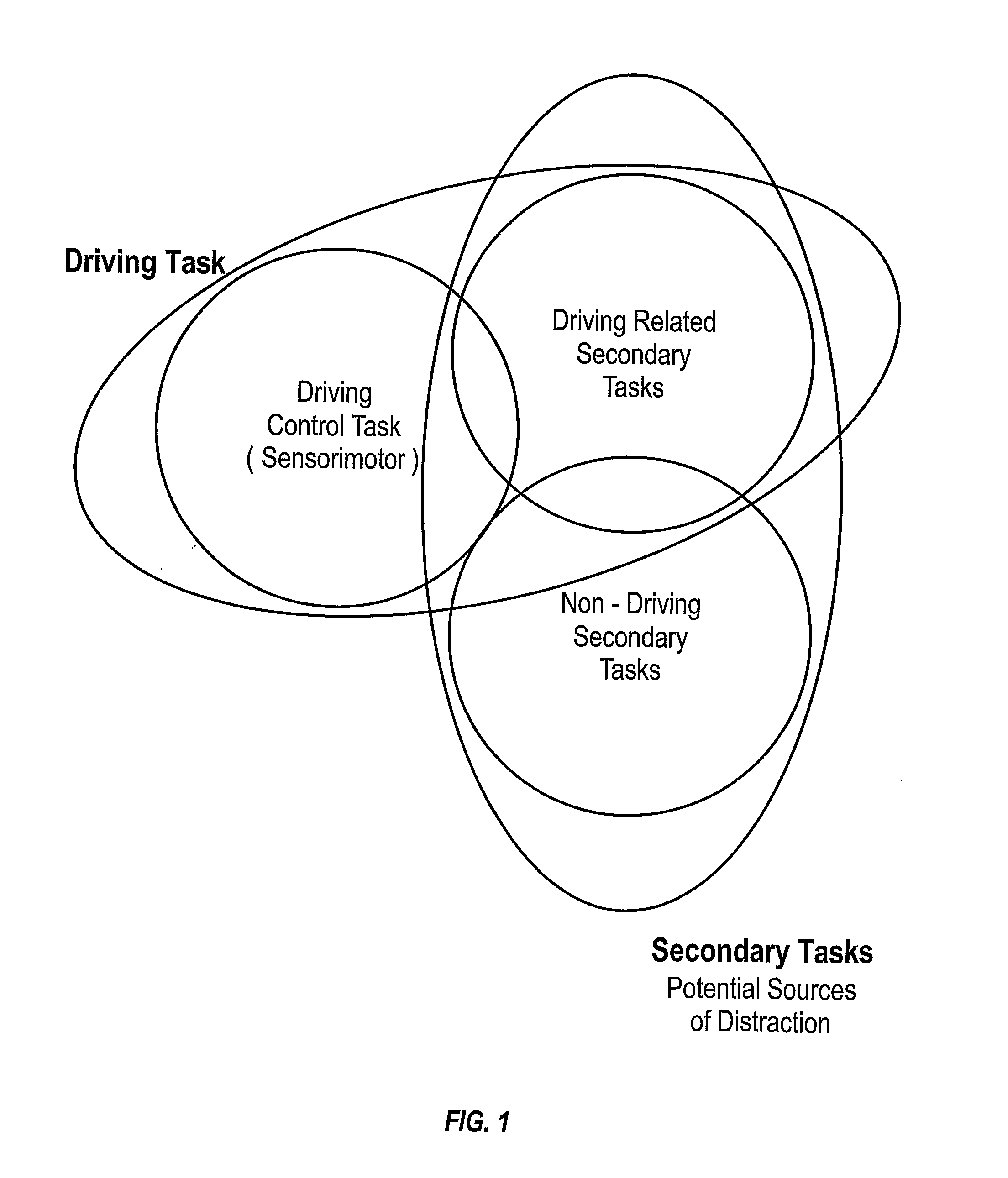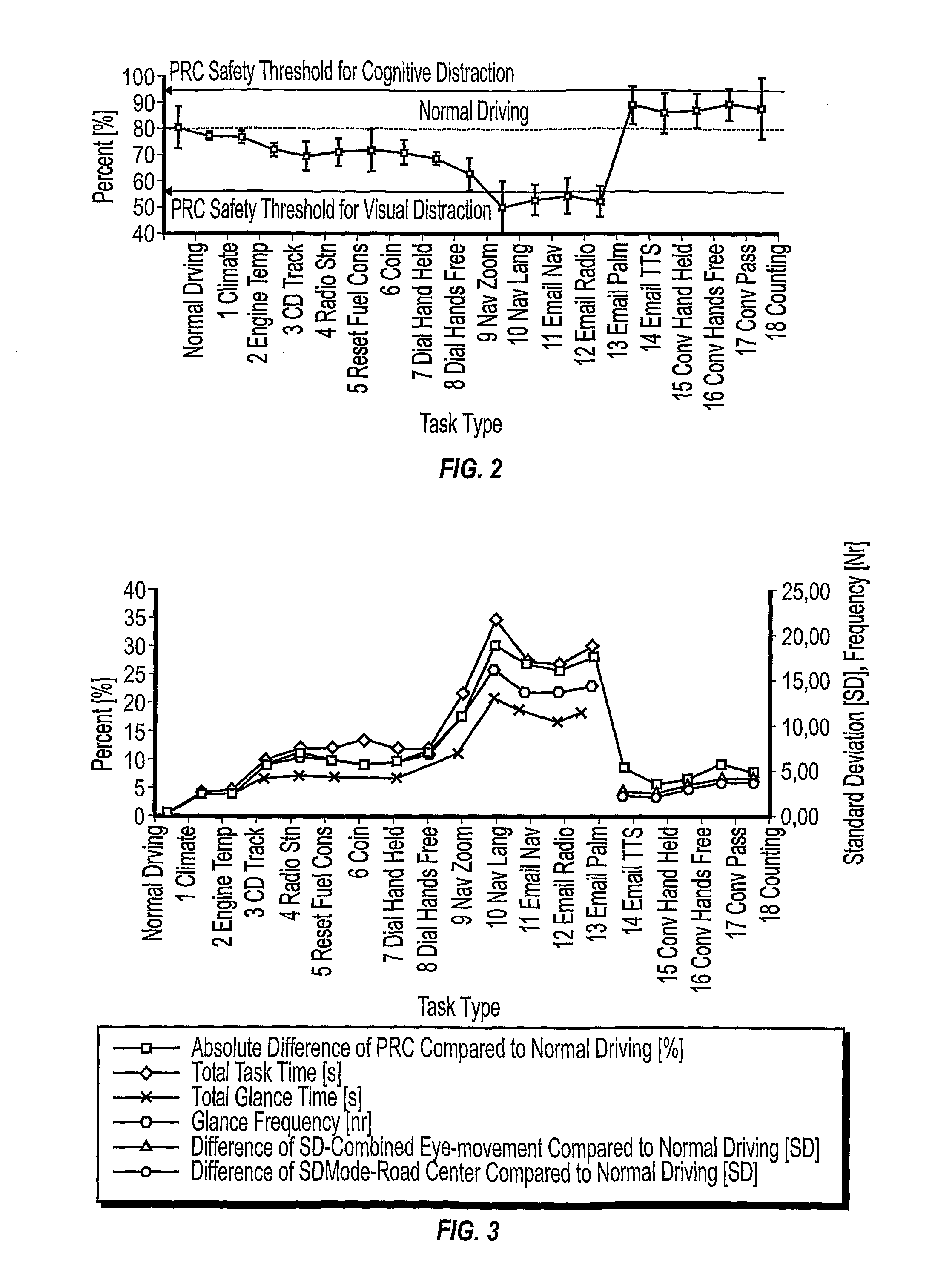Humans in general, and particularly as drivers, are poor judges of their own performance capabilities.
As a result, drivers are lulled into states of mind where little attention is being devoted to the driving task.
Not surprisingly, driver inattention is a leading cause of vehicular collisions, and especially automotive collisions.
It is known that fatigue impairs driver performance,
alertness and judgment.
Collisions caused by drowsiness are a serious road safety problem, and fatigue has been estimated to be involved in as many as twenty-three percent of all crashes.
Distractions such as handheld telephone use, sign reading, eating food, interaction with other passengers, observing objects and manipulating devices in-the vehicle have the potential for capturing a driver's attention in an excessive way and thus also compromising safety.
These things are often called secondary tasks and are potential distracters from driver attention to primary driving tasks.
A
secondary task becomes a
distraction (including visual-, auditory-, cognitive-, and biomechanical distractions) when the driver's attention is captured thereby to a degree that insufficient attention is left for the primary control tasks of driving.
As a result, driving performance such as lane keeping and speed control are compromised as ultimately is safety.
Two difficulties arise from this relationship between the driving and secondary tasks.
First, it can be difficult to delineate which
secondary task information is “irrelevant to the driving situation” and which is not; and second, certain driving related secondary tasks, for instance, looking for a street sign or planning a driving
route may also compromise safety as graphically depicted in FIG. 1.
Also, drivers cannot reliably determine when they are impaired by fatigue to the point of having a serious vigilance lapse or uncontrolled sleep attacks.
A primary drawback associated with current methods, however, is that there are few, if any, suitable automated tools for performing the analysis; in their absence, resort is commonly made to labor intensive, manual analysis.
A significant problem in current
eye movement research is that every research team seems to use their own definitions and
software to decode the
eye movement signals.
This makes research results very difficult to compare between one another.
However, the two standards are based on a recorded-video technique, and rely on frame-by-frame human-rater analysis that is both
time consuming and significantly unreliable.
Among other things, “
noise” in the data has been found to be a significant factor impacting data-quality-degradation due to such things as variable lighting conditions and head / gaze motion.
It may seem that the previous work done in the area of
eye tracking related research is reasonably exhaustive.
There are, however, not many on-road studies of driving task-related driver characteristics, and to date, there has been no utilization of eye-
tracking data on a real-time basis to calculate measures such as visual or cognitive
distraction (see FIGS. 2-4).
This is at least partially the result of the
time consuming nature of
manual segmentation and / or technical difficulties related to the non-portability of commonly used eye-tracking systems.
Many of these methods, however, are based on the typical characteristics of the eye tracker, such as sampling frequency, and do not work well with other such systems.
This avoidance by current research is understandable; it can be difficult to differentiate a smooth pursuit from a
saccade or a fixation.
Even so, the statistics above demonstrate that even prudent drivers are not always attentive to driving demands, nor are they consistently good managers of their own work loads and distractions when driving.
The problem, which induces collisions, is that unexpected things might happen during the interval when the eyes are off the road and reactions to these
unexpected events or objects can be seriously slowed.
 Login to View More
Login to View More  Login to View More
Login to View More 


